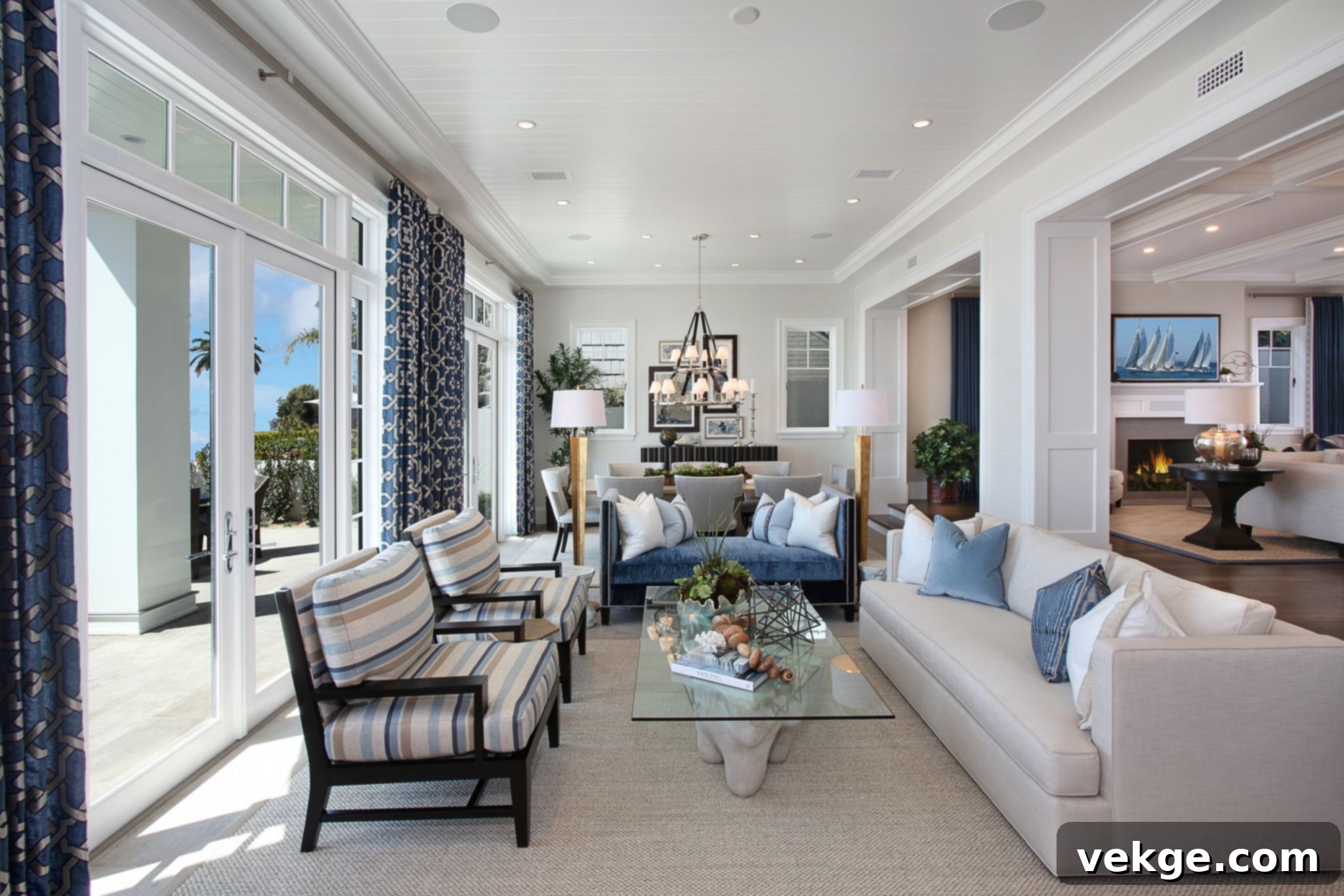Elevate Your Home: A Comprehensive Guide to Modern Coastal Art & Decor
The allure of the modern coastal interior design style has seen a remarkable surge in popularity in recent years. This captivating aesthetic offers a refreshing escape, blending the tranquil serenity of the seaside with the clean lines and sophisticated simplicity of contemporary design. The result is a home environment that feels both luxurious and inviting, a perfect sanctuary from the hustle and bustle of daily life. At its core, modern coastal design strives to evoke the calming essence of the ocean and beach, infusing spaces with light, air, and a profound sense of peace.
A hallmark of modern coastal interior design is its deep appreciation for natural materials. Elements such as light-toned woods, woven rattan, crisp linen, and organic jute are not just decorative; they are foundational, adding layers of warmth, texture, and authenticity to every room. These materials connect the indoor space with the natural world, creating an earthy, grounded feel.
Complementing these textures is a meticulously curated color palette, directly inspired by the vastness of the ocean and the sun-kissed tranquility of the beach. Shades of serene blues, pristine whites, soft grays, and an array of sandy neutrals converge to create an atmosphere of profound calmness and peace. Within this harmonious blend, the thoughtful selection and strategic placement of art and wall decor emerge as pivotal elements, transforming a mere house into a truly curated modern coastal home.
Mastering Modern Coastal Style: Integrating Art and Decor
Integrating art and decor into a modern coastal home goes beyond simply hanging pictures; it’s about crafting an immersive experience that reflects the beauty and tranquility of the shoreline. From color choices to textural elements and beyond, each piece of art contributes to the overarching narrative of a sophisticated, relaxed, and utterly captivating space. Let’s explore how to best incorporate these elements.
1. Calming Color Palettes in Art
The foundation of any modern coastal space lies in its color palette, which typically features soft, neutral shades like crisp white, warm beige, and subtle gray, often complemented by gentle pastels. These soft hues are carefully chosen to mimic the serene, natural colors found along the shoreline, from the pale sand to the misty sky and the various shades of seafoam. When selecting artwork, the goal is to find pieces that either seamlessly blend with these calming colors or offer a gentle, connecting visual anchor between them. Consider abstract paintings featuring soft washes of aqua, sky blue, or muted green, or minimalist prints that utilize a subtle interplay of whites and off-whites. Photographic prints of serene beaches, distant horizons, or soft cloud formations can also enhance this tranquil theme. The idea is to maintain an airy, expansive feel, ensuring that the art contributes to, rather than detracts from, the overall sense of peace and openness.
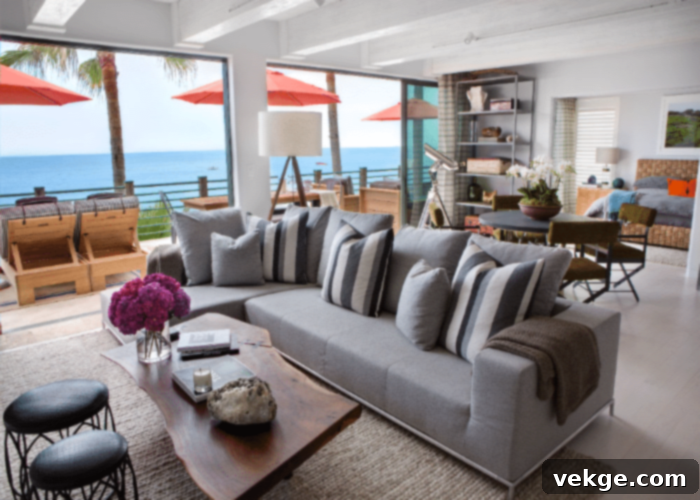
2. Embracing Natural Elements Through Artwork
Nature-inspired motifs are unequivocally fundamental to modern coastal decor, acting as direct conduits to the outdoor environment. To ensure a cohesive and authentic aesthetic within your space, it is crucial to select artwork that robustly incorporates these themes. This can manifest in various forms: evocative seascapes that capture the vastness of the ocean, tranquil landscapes depicting coastal flora and fauna, or abstract representations of organic shapes and movements found in nature. Imagine images of gentle waves, intricate shells, graceful seabirds, or even detailed botanical designs featuring palm fronds or sea grasses. Beyond printed images, consider pieces crafted from natural materials like driftwood sculptures, pressed botanical art framed in reclaimed wood, or canvas paintings that utilize natural pigments. These selections not only reinforce the coastal theme but also add an intrinsic, tactile connection to the natural world, fostering a sense of grounding and tranquility.
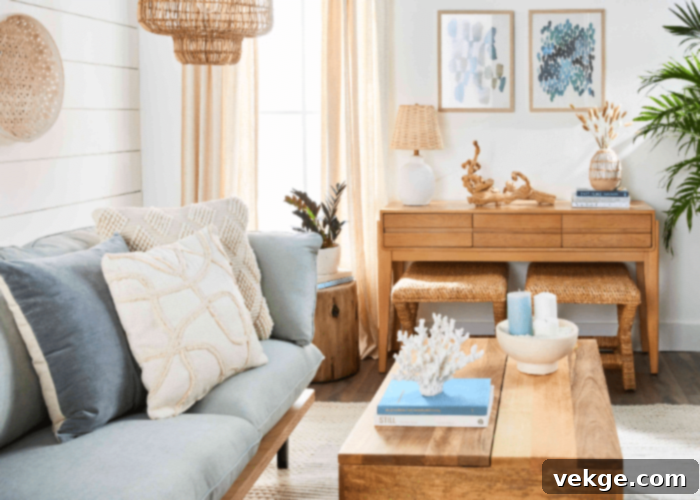
3. The Importance of Texture in Coastal Decor
Incorporating a variety of textures is a vital strategy for adding depth, warmth, and significant visual interest to your modern coastal space. Texture helps to create a layered look, establishing visual harmony between different elements of your decor and preventing the space from feeling flat or sterile. Look for artwork that inherently features natural materials or mimics their tactile qualities. This could include woven wall hangings made from jute, macrame art, pieces framed in raw or distressed wood, or artwork that incorporates elements like rattan, sisal, or linen. These textural art pieces offer an immediate sensory experience, contrasting beautifully with smoother surfaces and providing a rich, organic feel. Unlike more traditional framed prints or paintings with glossy finishes, textured artwork aligns perfectly with the modern coastal ethos, emphasizing natural simplicity and artisanal craftsmanship. Even abstract paintings with visible brushstrokes or impasto techniques can subtly introduce texture, adding another dimension to your wall decor.
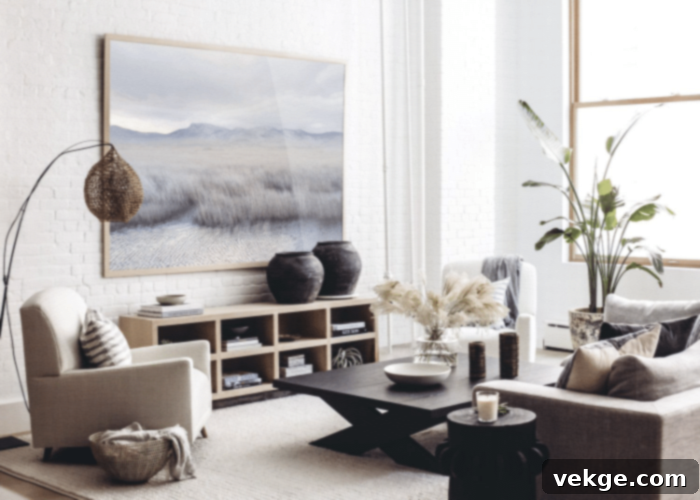
4. Simplicity and Clean Lines in Art Selection
Modern coastal design inherently champions simplicity and clean lines, aiming to create serene, uncluttered environments that promote relaxation. This principle should be prominently reflected in your choice of artwork. The key is to select pieces that do not overwhelm the space with excessive intricate detail, overly busy patterns, or visual clutter. Instead, gravitate towards artwork that features minimalist compositions, ample negative space, and a refined aesthetic. Remember, when striving for a tranquil environment, less is often genuinely more. Opt for simple, abstract paintings that use a limited color palette and fluid forms, or high-quality photographs that elegantly capture the essence of the beach without being too literal or chaotic. Line art, graphic prints with simple motifs, or large-scale, serene landscapes can also contribute to this understated elegance, ensuring the art complements the calm, spacious feel of a modern coastal home rather than dominating it.
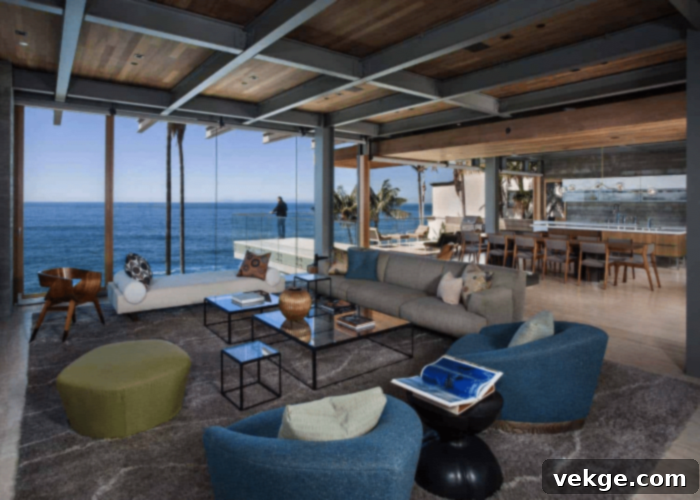
5. Beyond Traditional Wall Art: Creative Coastal Decor
One of the most exciting aspects of modern coastal decor is the invitation to think beyond conventional framed art. Often, the essential components of coastal living can themselves function as captivating wall decor, adding unparalleled character and a bespoke touch to your space. Consider arranging a carefully curated collection of vintage oars, smooth pieces of sea glass artfully displayed in shadow boxes, or rugged pieces of driftwood as sculptural wall installations, perhaps even in lieu of hanging a traditional print or painting. Other creative options include mounted surfboards, woven baskets arranged in a sculptural pattern, antique fishing nets, or framed nautical charts. Be imaginative and consider diverse ways to integrate “found objects” or everyday coastal items into your decor. This approach not only adds a unique, personalized charm but also reinforces the authentic, lived-in feel characteristic of a truly modern coastal home, telling a story without uttering a single word.
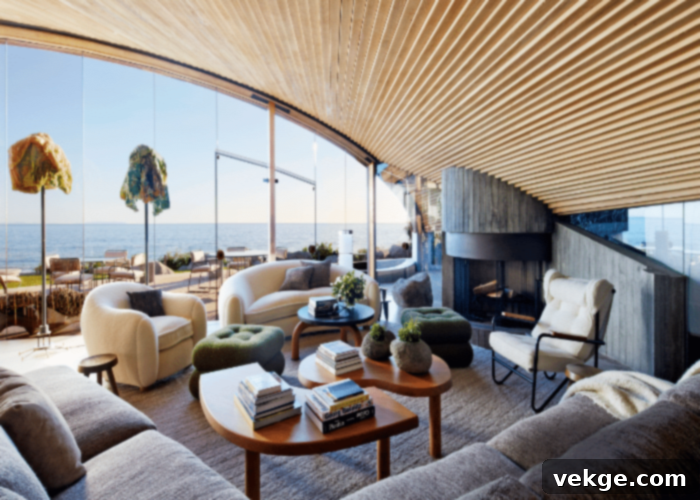
6. Strategic Use of Size and Shapes in Gallery Walls
An incredibly dynamic and interesting way to display artwork in a modern coastal setting is by creating a gallery wall that incorporates varying sizes, shapes, and orientations of prints, photographs, and even small objects. This technique immediately adds immense visual interest and depth to a wall, effectively transforming it into a compelling focal point within the room. When designing your gallery, consider mixing rectangular frames with square ones, introducing circular mirrors or round woven pieces, and integrating other coastal-themed elements such as artfully arranged seashells, starfish, or small sculptural pieces of coral directly into the display. This thoughtful combination of elements will enhance the overall coastal aesthetic, adding dimension, balance, and a rich layer of visual intrigue. To maintain the serene and cohesive atmosphere central to modern coastal design, it is advisable to adhere to the previously mentioned color palette—whites, blues, greens, and sandy neutrals—for all components of your gallery wall. This ensures a harmonious and sophisticated presentation.
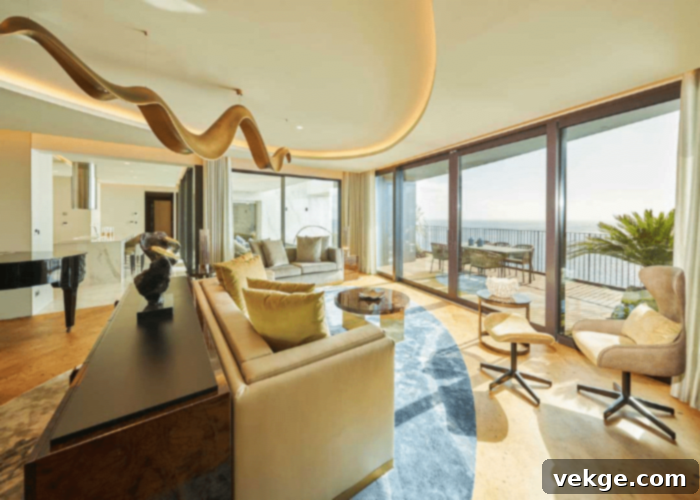
7. Achieving Balance Through Symmetry
While many design styles embrace asymmetry for dynamic visual interest, a sense of balance and symmetry holds particular significance in modern coastal decor, contributing to its inherent calm and order. Arranging your artwork in thoughtful, often geometrical patterns can profoundly enhance this feeling of equilibrium. This involves playing with equal weight distribution, ensuring consistent spacing between pieces, or even mirroring elements to create a harmonious visual flow as part of the styling process. For example, two identical framed prints flanking a central window or a large piece of furniture, or a grid of equally sized pieces, can evoke a serene balance. Furthermore, consider extending this principle to your furniture arrangements, such as placing matching pairs of chairs, side tables, or lamps to reinforce the sense of order and tranquility. While absolute symmetry isn’t always mandatory, the conscious effort to create visual balance through careful placement helps to establish a truly peaceful and well-composed modern coastal environment.
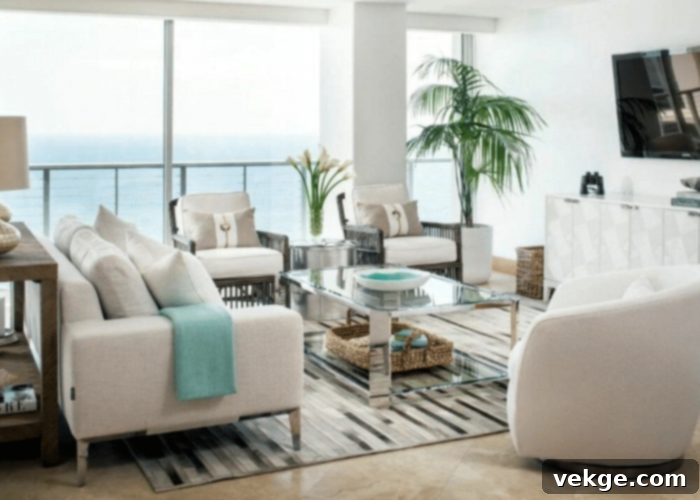
8. Considering Mood and Broader Context
When curating artwork for specific rooms within your home, it is imperative to consider how each piece integrates into the broader context of that particular space—its intended function, desired mood, and existing furnishings. For example, a tranquil seascape or a soft abstract piece might be ideal for a bedroom, fostering a sense of peace and encouraging rest. In a living room, where conversation and gathering occur, you might opt for pieces that are more visually engaging yet still align with the coastal aesthetic, perhaps a striking photographic print of ocean waves or a subtle abstract with more dynamic movement. For a children’s playroom, more playful pieces featuring marine animals or bright, yet still coastal-inspired colors, could be chosen. By thoughtfully considering the room’s context, you can ensure that the artwork not only elevates the overall aesthetic but also harmoniously complements its primary purpose and desired atmosphere, creating a truly unified and functional space.
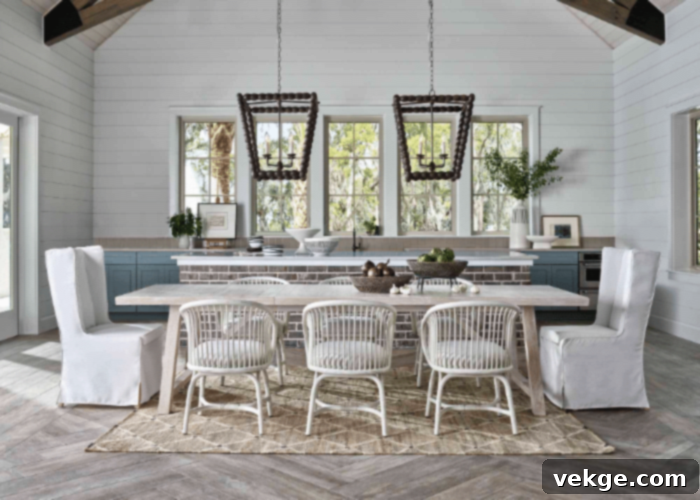
9. Aligning Artwork with Function and Purpose
Understanding the precise function and purpose of a room is paramount when selecting artwork, as it directly influences the appropriate style, size, and subject matter. Art should not merely fill a wall; it should actively enhance the room’s utility and emotional resonance. For instance, a serene, expansive landscape painting or a minimalist abstract piece in soft hues would be an ideal choice for a bedroom, promoting a sense of calm and relaxation conducive to sleep. Conversely, a home office might benefit from a more stimulating piece, perhaps a bold abstract with clean lines or an inspiring depiction of distant horizons, designed to energize and enhance focus. In a dining area, art that subtly encourages conversation or evokes a sense of shared enjoyment might be preferred. By meticulously aligning the artwork with a room’s intended use, you can cultivate an environment that is not only visually appealing but also intrinsically supports the desired mood and atmosphere, making the space more effective and enjoyable.
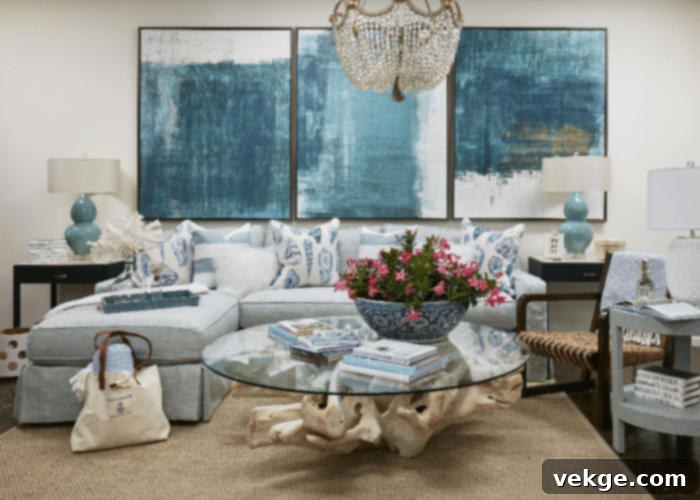
10. Cultivating the Desired Atmosphere with Art
When selecting artwork for any space, the colors and subject matter within the piece play a pivotal role in cultivating the desired atmosphere. The psychological impact of color is profound: while warm tones such as reds and yellows can create a cozy, inviting, or even stimulating atmosphere (used sparingly as accents in coastal design), cool tones like blues and greens are instrumental in evoking a sense of calmness, tranquility, and expansiveness, which are the hallmarks of modern coastal style. Furthermore, the subject matter significantly contributes to the mood. A piece depicting a peaceful natural scene—a calm ocean, a quiet beach, or a soft sky—can immediately instill a sense of serenity. In contrast, abstract or subtly vibrant artwork can add a sophisticated touch of energy and visual intrigue without disrupting the overall calm. By thoughtfully choosing artwork that resonates with the intended mood, whether it’s restful, invigorating, or reflective, you can profoundly enhance the overall ambiance and emotional quality of a space.
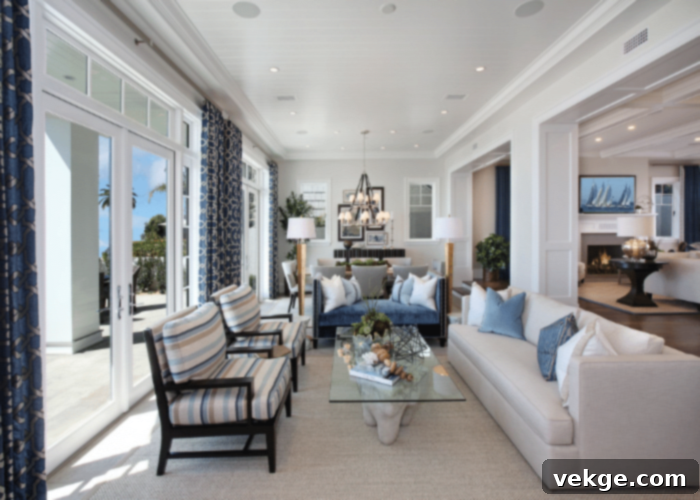
11. Harmonizing with Existing Furniture and Architecture
The importance of considering existing furniture and architectural elements when choosing artwork cannot be overstated; they serve as critical guides for achieving a cohesive and balanced interior. The colors, patterns, overall design, and scale of the furniture and decor already present in a space provide invaluable cues for selecting artwork that not only complements but also harmonizes seamlessly with these established elements. For instance, if your furniture features sleek, modern lines, your artwork should likely follow a similar minimalist or abstract aesthetic. If your space incorporates rustic wooden pieces, art with natural textures or distressed frames would be a natural fit. Architectural features such as built-in shelving, archways, or prominent windows should also influence the placement and even the style of your chosen pieces. By meticulously considering these existing components, the artwork can be seamlessly integrated, fostering a visually pleasing environment where every element feels intentionally placed and contributes to a unified, sophisticated modern coastal aesthetic.

Conclusion: Crafting Your Perfect Modern Coastal Sanctuary
The journey of choosing artwork that perfectly complements the existing elements in a room is a crucial step towards creating a harmonious, balanced, and deeply inviting space. It’s more than just an aesthetic enhancement; it fundamentally contributes to the overall feel and emotional resonance of the room. In the context of modern coastal design, every piece of art acts as a brushstroke in a larger painting, contributing to an atmosphere of serene sophistication.
Beyond technical considerations, selecting artwork that profoundly resonates with the personal style and taste of the homeowner is paramount. It allows for an infusion of individuality and personality, transforming a beautifully designed space into a true reflection of its occupants. This personal touch is what elevates a house to a home, making it a place where comfort, beauty, and personal expression coexist seamlessly.
Ultimately, the right artwork holds the power to transform a room into a genuine sanctuary—a place that feels truly like home. Whether your preference leans towards traditional seascapes that evoke timeless charm or contemporary abstracts that capture the essence of coastal modernity, the chosen pieces should always reflect your unique style and personality. Concurrently, it’s vital to consider the functionality and purpose of the space, ensuring that the artwork not only beautifies but also enhances the living experience. Embrace the process, trust your instincts, and curate a collection that brings the tranquil beauty of the modern coast directly into your everyday life.
